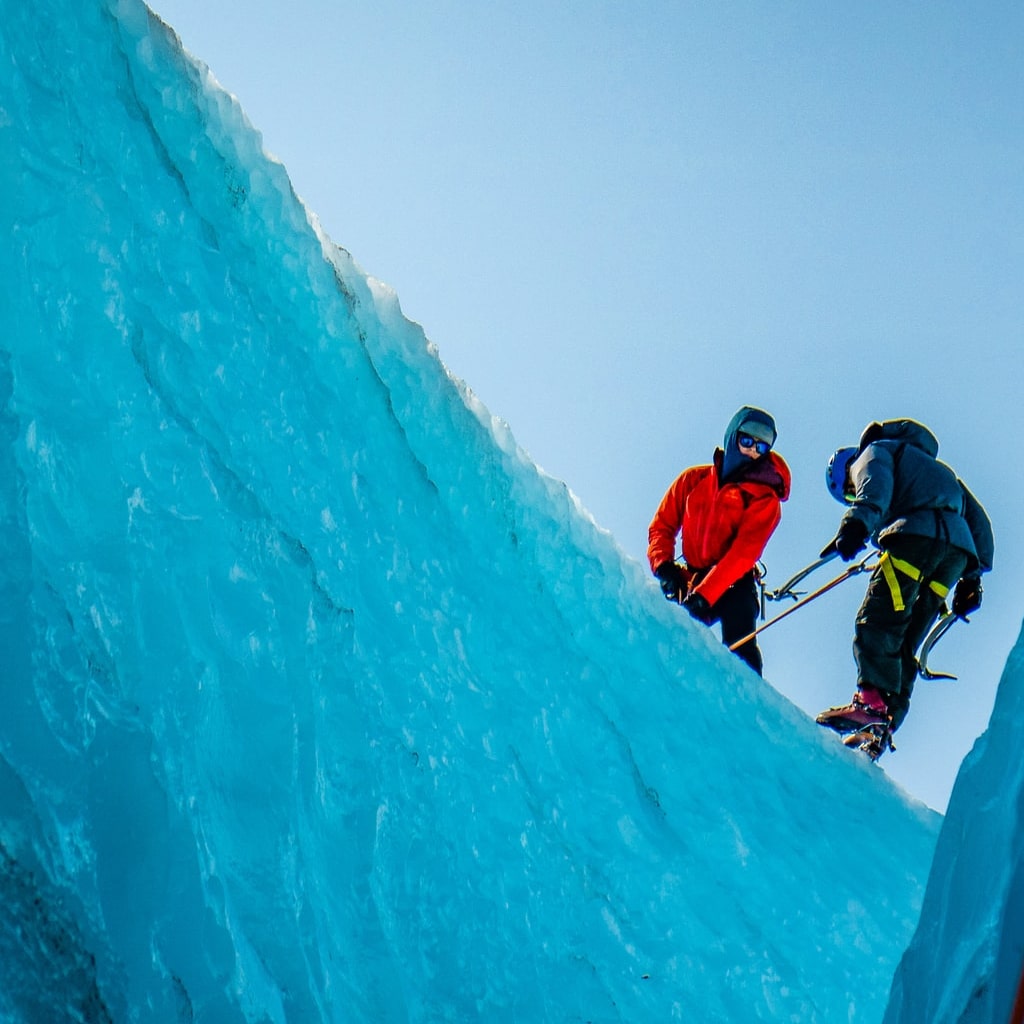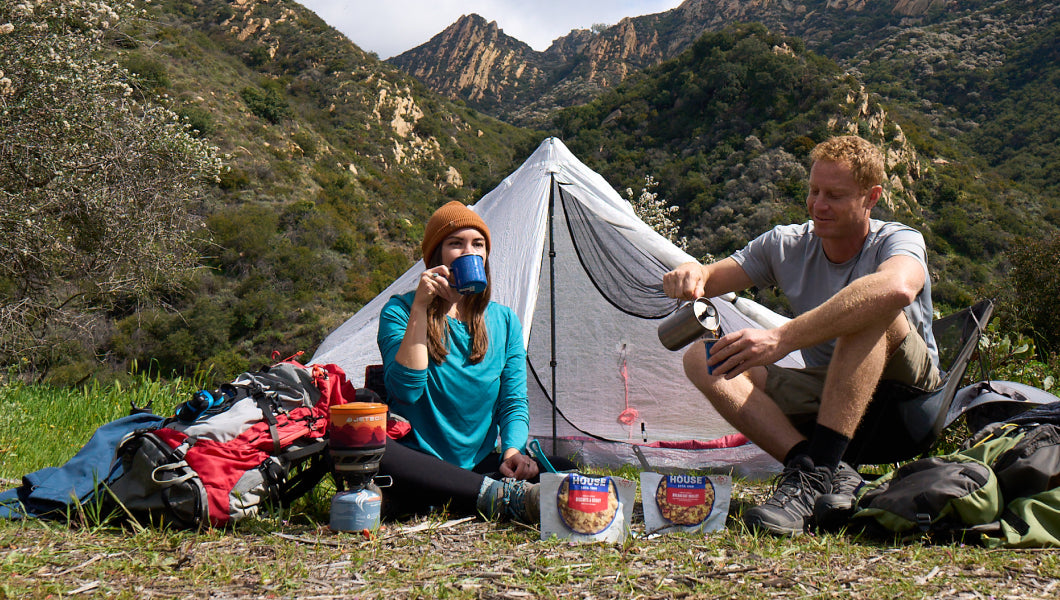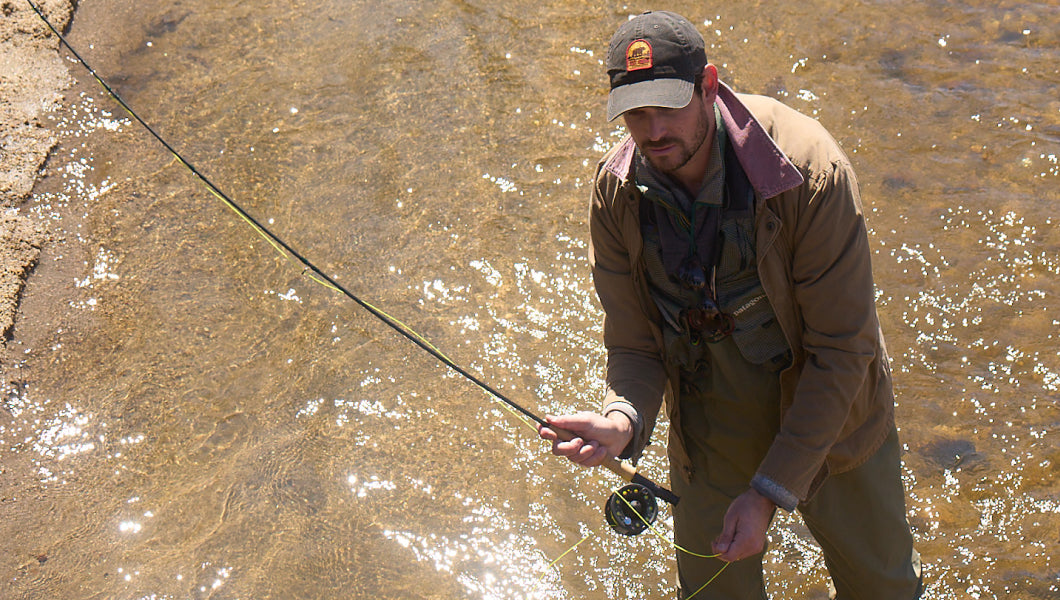Inspired for an Adventure? Check out Beef Stroganoff - Pouch and Beef Stew - Pouch
Free Ground Shipping On All Orders
Over 2,100 Reviews
Add description, images, menus and links to your mega menu
A column with no settings can be used as a spacer
Link to your collections, sales and even external links
Add up to five columns
Add description, images, menus and links to your mega menu
A column with no settings can be used as a spacer
Link to your collections, sales and even external links
Add up to five columns

How to Choose an Ice Axe That Best Suits Your Needs & Size
An ice axe is an invaluable tool for those haunting the heights. That obviously includes hardcore mountaineers and ice climbers, but also backcountry ski tourers, hikers or backpackers hitting mountain trails early or late in the season, and hillwalkers traversing modest but slippery snow- or ice-slathered highlands. Providing a handy “third leg” on a crusted mountainside traverse, biting into a vertical ice wall, carving out an emergency snow shelter, stopping what might otherwise be a catastrophic plummet down a severe crusted slope: It’s hard to overstate the value or the versatility of these trusty tools.
Descended from the venerable alpenstock, which helped drive many a pioneering summit climb in the Alps back in the day, the ice axe has been honed and diversified in construction and style to meet the demands of modern outdoorspeople drawn to inclined snowscapes, glacier travel, and frozen-over waterfalls. Here’s a basic guide to help you choose the right ice axe for your needs!
Parts of an Ice Axe
You can’t really effectively evaluate an ice axe without understanding its basic construction. Here’s a rundown of the tool’s fundamental parts.
- Head: The head of the axe is the broadest part, and comes double-headed, with the pick and the adze (or, on an ice tool, the hammer) on opposite sides. These are mostly built from steel alloy.
- Shaft: This is the long “handle” of the ice axe, though actually in many uses of the tool you’re holding the head. The shaft is typically made from aluminum, steel, carbon-fiber, fiberglass, or a composite. Depending on the style of ice axes, it may be straight or curved to varying degrees.
- Pick: The pointy end of the head, the ice axe’s pick is used for driving into the snowpack in a self-arrest situation, or into ice or glazed snow when climbing near-vertical or sheer slopes.
- Adze: On general-mountaineering ice axes, the opposite side of the head to the pick is the adze: a flattened, squared-off wedge. This is used to chip steps in snow, flatten tent platform sites, dig trenches, carve our snow shelters, and execute other important snow-travel tasks—plus provide a broad handhold when wielding the ice axe as a snow-staff.
- Hammer: Technical ice climbers and mixed climbers (dealing with both bare rock and ice on their routes) favor ice tools with hammerheads instead of adzes opposite the pick, used to drive in pitons and other protection.
- Spike: The bottom of a traditional ice axe’s shaft ends in a keen metal point: the spike. This punches into the snowpack when the axe is used as a steadying aid climbing or traversing a slope—or, in a more desperate situation, as an anchor to stop a slip or fall via a self-belay.
- Carabiner Hole: The ice-axe head includes a hole for attaching a leash or carabiner.
- Leash: Many climbers use a leash passed through the carabiner hole or around the shaft and then around their wrist as a safety net in case they drop their ice axe. Whether or not to use a leash is an important consideration: Being tightly attached to an ice axe if you no longer have control over it and are tumbling down a hard slope can be a dangerous situation. Generally speaking, if you’re climbing in areas where a dropped ice axe could lead you precariously positioned or be challenging to retrieve, a leash may be helpful.
Different Types of Ice Axes & Ice Tools
All ice axes aren’t created equal, and the different styles you see on display at your favorite outdoor retailer aren’t interchangeable. Choosing the right type or style of ice axe for your needs is essential to having a tool that’ll do the job you need it to.
General Mountaineering Ice Axes
These are your traditional, garden-variety mountaineering ice axes. They’re typically straight-shafted, boast a fairly level and straight-edged adze, and have positive-curve pick with a 65- to 70-degree hooking angle. The axe’s teeth generally extend only partway up the pick from its tip.
Ice axes for general mountaineering are broadly useful, employed as trekking supports on moderate to steep slopes, to self-belay and self-arrest, and for hacking out steps, excavating snow shelters, and serving as belay anchors on snow slopes. They’re appropriate for everything from backcountry skiing and shoulder-season backpacking (when maybe you’re just dealing with a few snowfields or a light skim of snow) to alpine climbing.
Technical Ice Axes & Ice Tools
Ice axes used in technical ice climbing have shorter, curved shafts to provide more clearance when driving the pick into ice or hard snow. The picks are recurved to make it easier to remove the tip from such substrates, and have teeth along their full length. Specialized technical ice axes or ice tools often have hammerheads rather than adzes for pounding in protection.
Technical ice axes and ice tools are used by alpine climbers dealing with very sheer or icy slopes, waterfall ice climbers, and mixed climbers. They’re the implement of choice for negotiating vertical or bulging ice walls and severely steep snow slopes.
Hybrid Ice Axes
Hybrid ice axes split the difference between general-mountaineering and technical-ice-climbing models. They tend to have a slightly curved shaft for better clearance and ergonomics, though not so extreme as that of a technical ice-climbing axe, and usually have a recurve pick. They may be attractive to climbers who want the best of both worlds: a support staff and self-arrest aid on moderate snow slopes as well as a tool ready for the more technical demands of steeper, icier sections.
What Size Ice Axe Do I Need?
Arguably the most complicated part of choosing an ice axe is deciding among shaft lengths. And that’s mainly to do with general-mountaineering axes, as technical ice-climbing axes/ice tools have less variation in this department; most are about 50 centimeters long. Ice axes for general mountaineering, by contrast, may range from 40 to 90 centimeters in length.
Factors to consider when selecting the right mountaineering ice-axe length include your height—taller folks generally go for longer axes, for obvious reasons—but also what kind of high-country recreation you intend to be pursuing. Longer ice axes on the order of 65 or 70 centimeters are often recommended for general mountaineering, but these may, realistically, be too lengthy: On lower-angle slopes, you’re often better off just using a trekking pole, switching to an ice axe when the grade steepens past 30 degrees or so. A too-long ice axe used to steady yourself on steeper slopes doesn’t give you the full support you need and can put you off-balance. That said, if you expect gentler hillsides or mountainsides you’ll be crossing to be mantled in hard-crusted snow, a longer ice axe with its punchy spike is often better than a trekking pole.
Generally speaking, choose a general-mountaineering ice axe that, when held at the head by an arm hanging by your side, extends by its tip somewhere between your lower calf and your ankle.
Do I Need One or Two Ice Axes?
Many of us who enjoy getting up in the snowy highlands only need a single ice axe, choosing the best all-around models for our needs. If you’re mostly afoot on snowy slopes as an early-spring backpacker, ski tourer, or a mountaineer tackling many a standard snow-covered alpine line, one axe often does just fine. A technical ice climber, meanwhile, commonly wields two ice axes or ice tools—often one with an adze, the other with a hammerhead. On complex alpine routes, you may decide to bring two different ice axes to deal with different slope angles and conditions. Meanwhile, modular ice axes give you the option to swap out different heads/picks for different circumstances.
Keep Mountain House Up in the Alpine
Choosing the right ice axe for your needs is one thing: Practicing its use is another. If at all possible, take an on-the-mountain class from a reputable instructor—or learn the ropes from an experienced friend—so you know the ins-and-outs of self-arrests and other potentially life-saving techniques. And make sure you’ve got plenty of Mountain House on hand for your next mountaineering expedition!
17 of the Greatest Achievements in Mountaineering History

How to Choose Crampons & Use Them for Ice Climbing Expeditions


Stay Hungry for Adventure
Sign Up for Delicious Outdoor Meals & Exclusive Offers!


Join the adventure
©2024 Mountain House — All Rights Reserved.
Your Cart is Empty
Continue ShoppingYour Cart
Subtotal
$0.00
EXPRESS PAYMENT METHODS AVAILABLE IN CHECKOUT
Taxes and Shipping Calculated at Checkout














